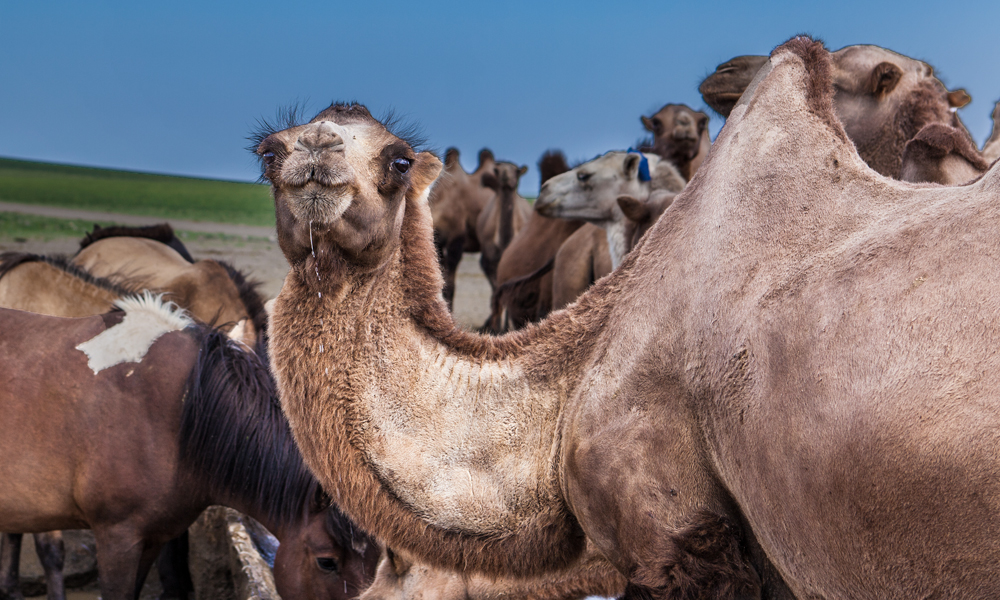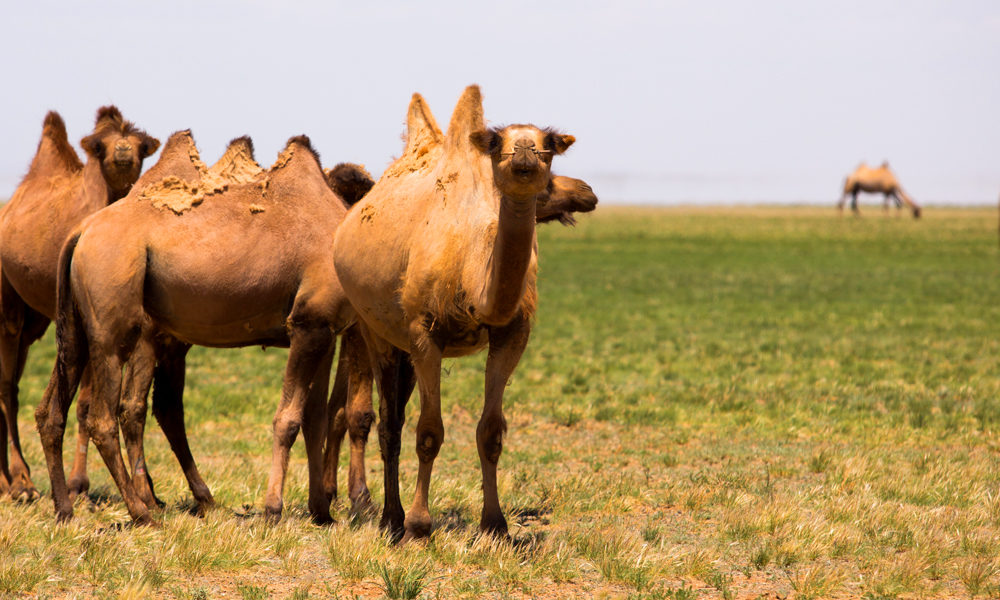The temperature in the Gobi in the south of Mongolia reaches −40 °F in the winter, and as high as 113 °F in the summer, making this one of the most forbidding lands in the world. Yet Bactrian camels have thrived here for millennia, supplying the nomadic herders with valuable wool for textiles, milk for sustenance, and transportation throughout the region.
More curious than its uncanny adaptive ability is how the Bactrian camel came to inhabit the Gobi at all.
The earliest-known camelids, Protylopus and Poebrotherium, were small in stature. Ranging from the size of rabbits to that of goats, they appeared on North America savannah around 40 million years ago. Their progeny of the next 20 million years grew to be far taller—more than a dozen ancestors, evolving to display the elongated legs and exaggerated necks for which camels are unmistakable.
One species, Megacamelus, reached even taller than the woolly mammoths of the same time period, some 10 to 5 million years ago.
Around 25 million years two branches of the camelids diverged on separate paths. The Lamini ventured south and circa 3 million years ago they entered South America. There they developed variously into Llama, Alpaca, Dromedary, Vicuna, and Guanaco. Camelini however headed northwest and crossed the Bering land bridge of continental ice between modern day Alaska and Siberia. They ranged down into South Asia, continuing into the Middle East, North Africa and Southern Europe. This branch developed as well, into Dromedary (one-humped), Bactrian (two-humped) camels, and their undomesticated relative that persist on the verge of extinction—Wild Bactrian camels.

Both types of Bactrian camels are found in Mongolia and the Gobi, where they thrive in part because their coats grow long and thick in the winter and short and thin during summer. Other anomalies of their biology: their long legs allow them to avoid the heat of the desert’s surface; they can carry over 400 pounds for long treks; they can avoid sweating until their body temperature reaches 105 °F, and they can survive weeks without water while tolerating a water loss equal to 30% of their body weight (15% kills most mammals).
Their presence in the Gobi also benefits the greater ecosystem as Bactrian camels eat the shrub known as the Saxaul tree and are instrumental in helping to spread its seeds, creating new forests, which in turn are key to reducing wind erosion and protecting other plants.
Their wool has unique hypoallergenic properties beneficial to those who wear it and has the added benefit of not pilling into the small balls common to knit woolens.
Equipped with seemingly endless patience, they make excellent companions for trekking the vast dunes of the Gobi. Sitting upon one is a cinch, since they lower for you to get on, and you can sit astride them, between the two humps—whereas a dromedary is more precarious.
The most common type of saddle for a Bactrian camel is a pad or blanket with two connected “fenders” hanging down each side, complete with stirrups.
Today there are some 16 Bactrian camel breeds. The population of the wild species has been dwindling but can yet be seen here. They dwell at the Great Gobi Strictly Protected Area A section under protection of Wild Camel Protection Foundation. A touchstone to a time some 700,000 years ago when their branch diverged from the Dromedary.

